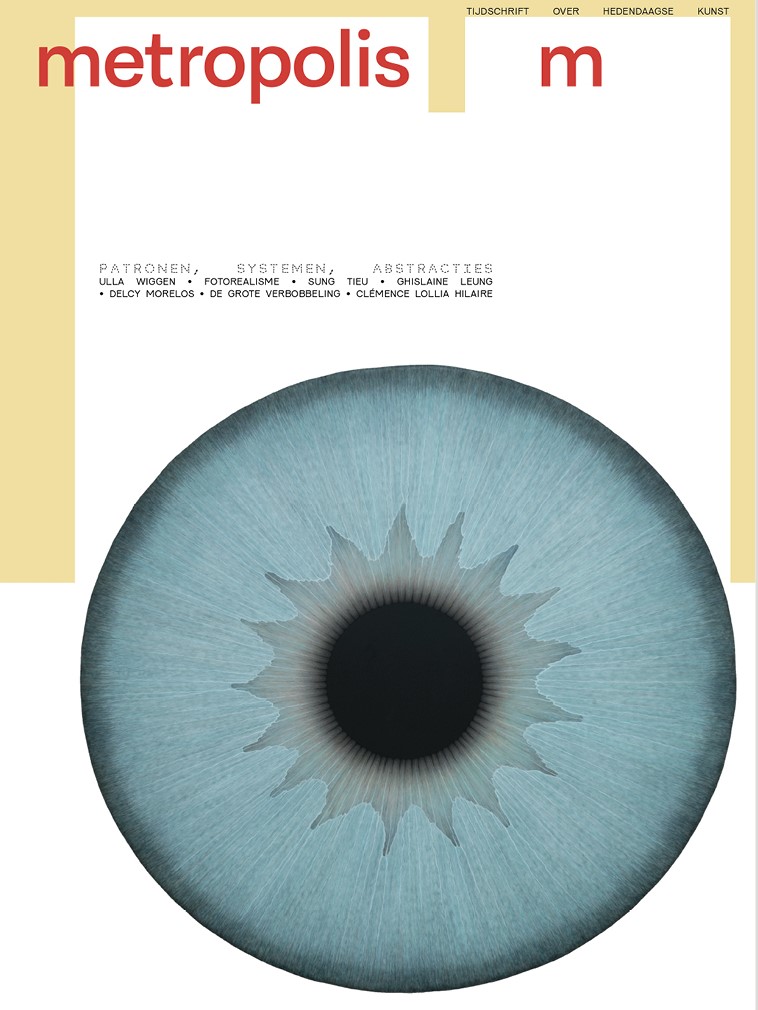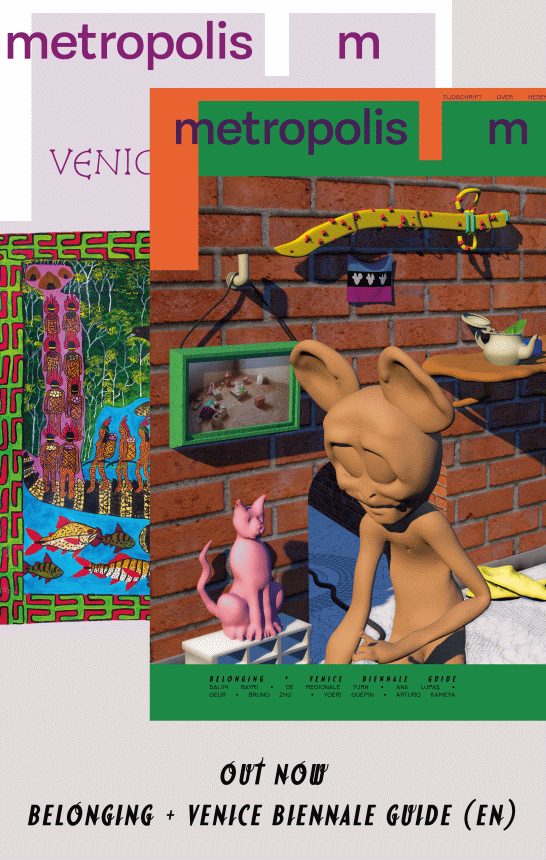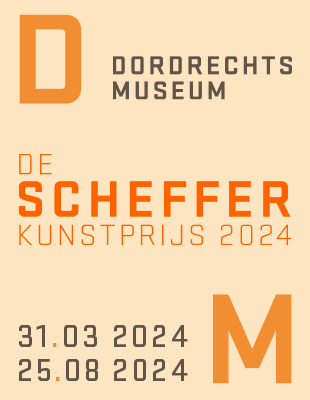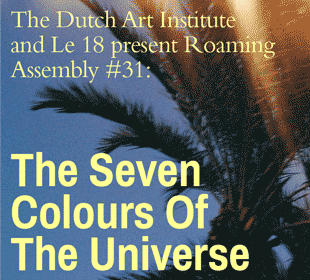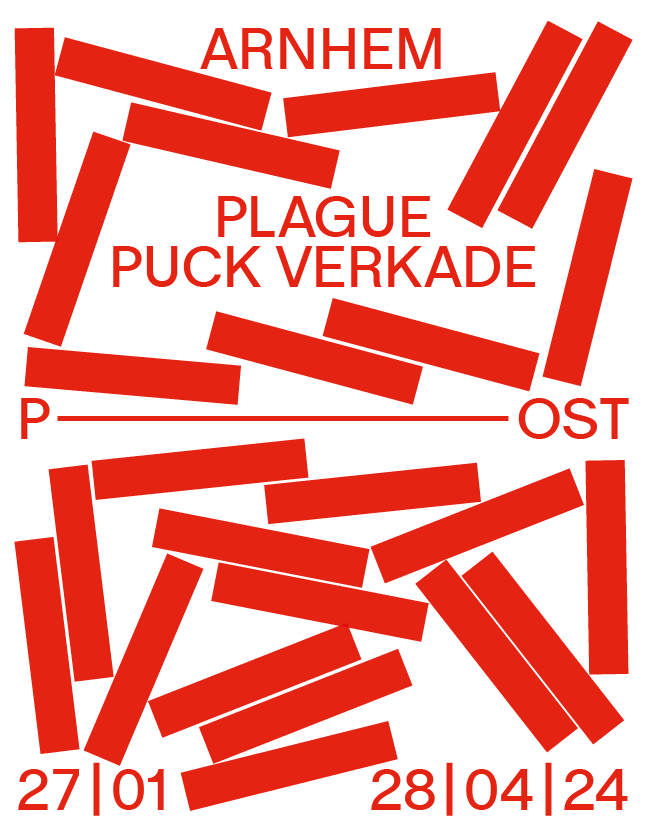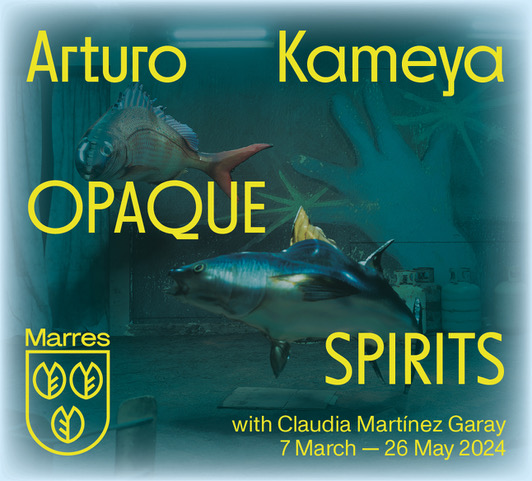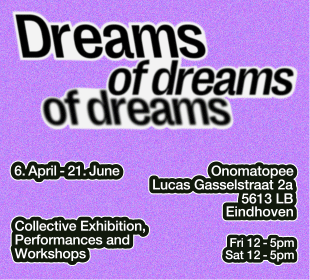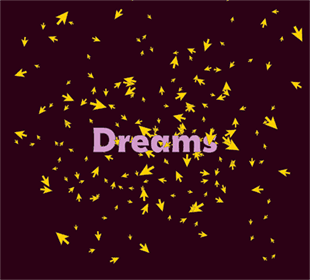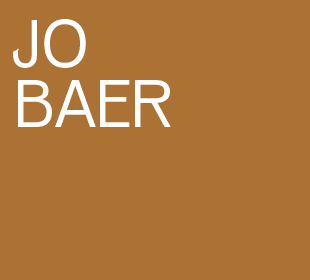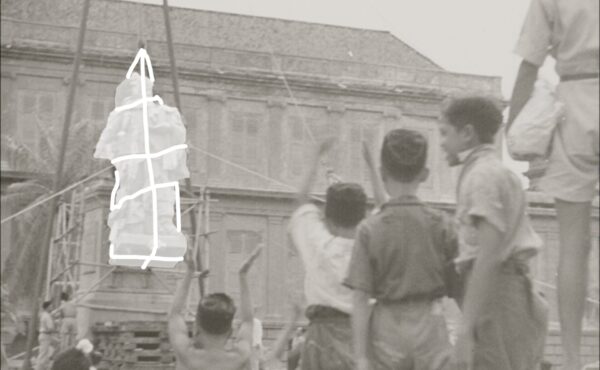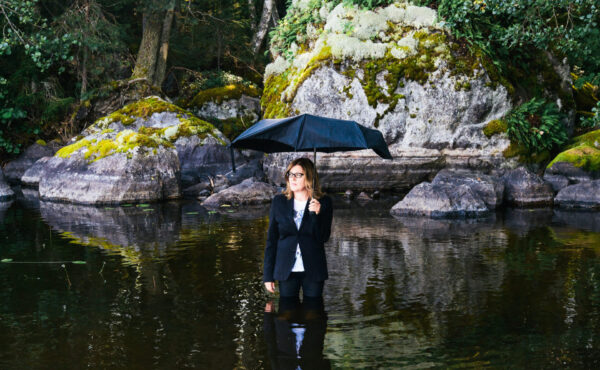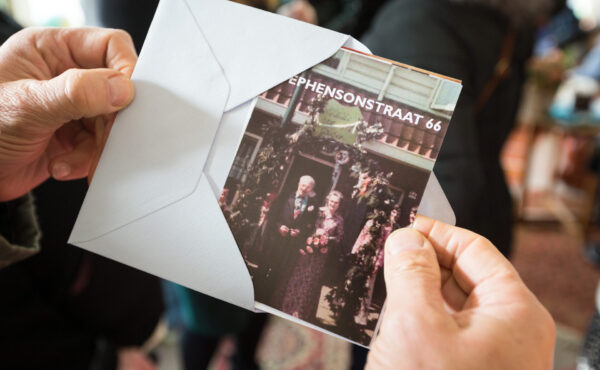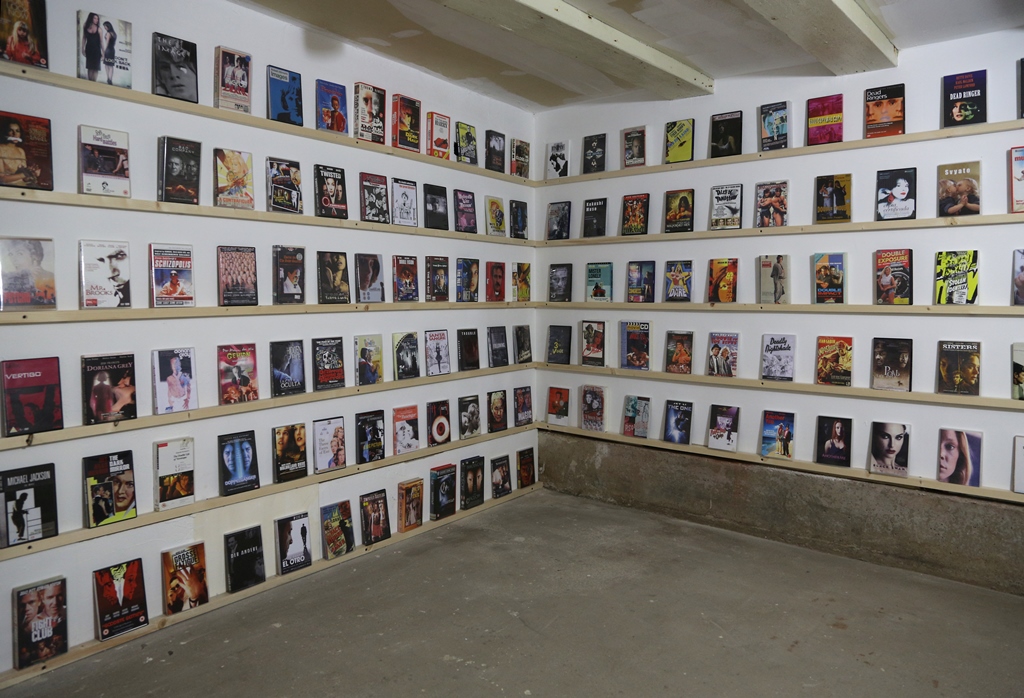
Sascha Pohle at Rongwrong Entrance through the Back Door
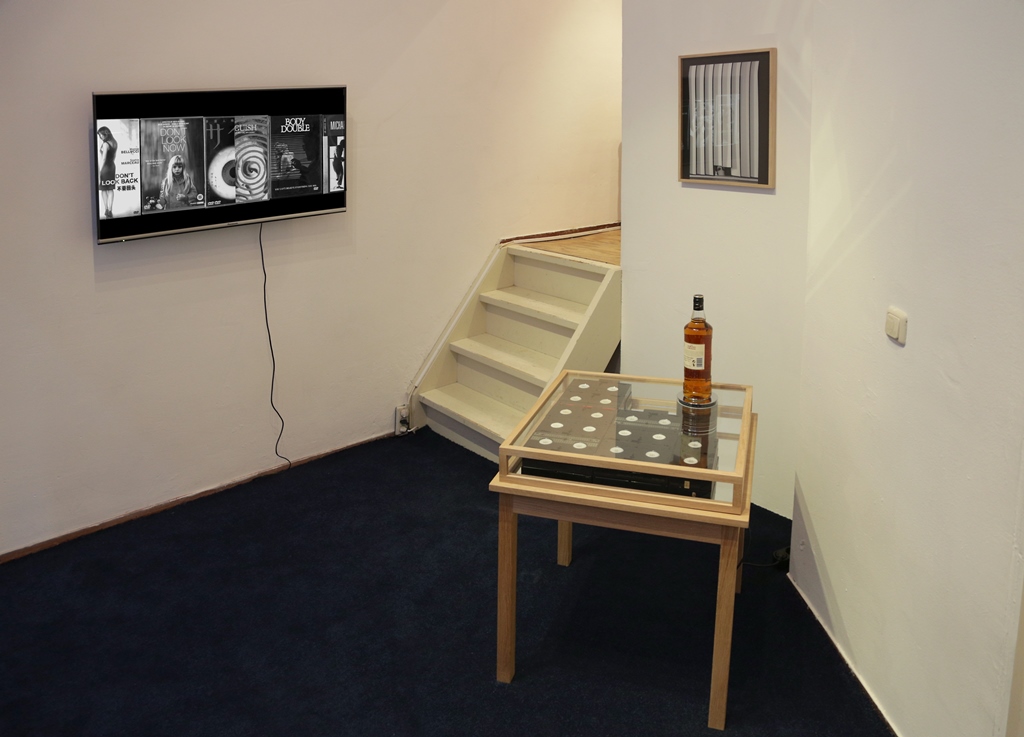
The beginning of this text could be a movie scene. Late evening pours with rain. Small street behind the gallery. Some people are starting to gather, coming from around the corner. They hesitantly look around for an entrance. There is a flashing neon arrow, which might be a clue. They start collapsing their umbrellas and going inside the dim room through the window. And then it comes – the credits. “Home Sequence”. Sascha Pohle. And that was the scene from the opening of his show at Rongwrong in Amsterdam.
When entering the small room in a basement of the gallery, the visitor finds itself in a model of a video rental store – surrounded by collection of movies on videotapes and DVDs. From film noir to the latest productions. The display based on Sascha’s memory of the former “Cult Videotheek” in Amsterdam, which one of the regular customers was Quentin Tarantino, who while writing script of Pulp Fiction was hanging out in coffeshops in the vicinity of the gallery.
Some of the exhibited boxes’ covers are original, some fabricated. It seems to be more about the content and spirit than actual act of collecting precious items. Looking more closely certain words and titles are more conspicuous than the others: face, sisters, schizoid, and most of all – double and doppelganger. All together they create a peculiar set, like a weird section in the video library. But there seems to be a riddle. The hint to find it might be the fact that all films are from Pohle’s personal archive, which reveals artist continuous fascination with cinema, doubles, impersonations and re-enacting. In one of his previous works he personated the main protagonist of Frank Perry’s movie The Swimmer or, in the other – he was following three Robert’s de Niro impersonators.

The video-room gives an impression of something fusty and forgotten. With its damp smell of a basement and ghosts of the VHS that is no longer in common use. Indeed, on the shelves are only the covers. The content (videotapes, DVDs, hard drive) has been removed and placed on a table upstairs, inside the glass showcase. Its value has been reduced to the role of objects. Restaging his private collection, Sascha makes it available for the public and at the same time – it’s only a display. Thus the act of revealing inspirations makes them inaccessible.
The habitual purposes of the gallery’s rooms have been unsettled. The main exhibition space is located now in the basement – where used to be a storage, and items that used to be kept inside are moved to the upper floor. The effect is even more surprising and stronger for the visitors who are familiar with the usual Rongwrong’s layout.
Thereby, the space becomes an inversion of itself. Like a mirror reflection – kind of the same, but different. Or rather like architecture in a dream – a place that is familiar and uncanny at once. The domestic items, like videotapes, furniture or curtains, have been brought (or recreated) from Pohle’s home. It forms a peculiar hybrid of private environment, gallery and a video store, which appears to be not a replica or scenography but rather a simulacra of reality – a “parallel world”.
The setting of the exhibition resembles aesthetic of a B movie from the seventies. Perhaps because of the faded colors, leather armchair or spinning whisky bottle. And in a way “Home sequence” acts like a movie. It requires the same kind of attention and intimacy as watching a film, which introduces us to its own world that we can delve into, get lost or lose the sense of time or identify with its protagonists.
Like in a short story “Anyone is anyone” by Richard Prince (the master of creating art works that are doubles of already existing images), which tells about a man who was spending all his time watching movies borrowed from a video rental shop, to the point that: “He started to think how his thoughts didn’t sound like him. He started thinking about personality. And thinking about how personality can be different from the person who has it” .
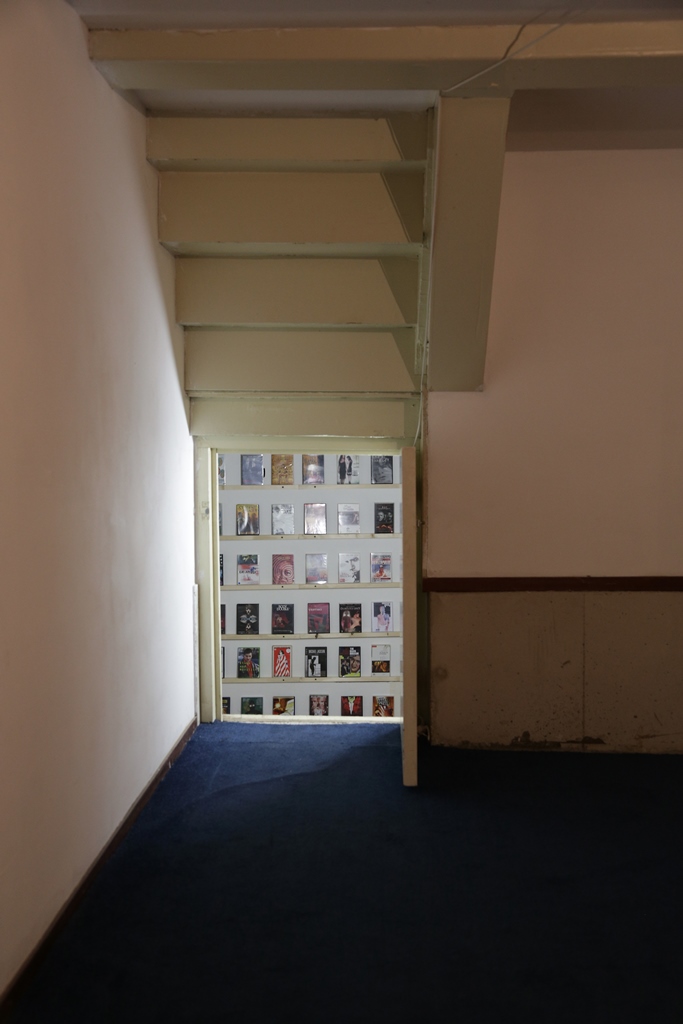
In his artist statement Sascha Pohle’s wrote that when he was a kid he wanted to become an actor. “Instead I became an artist intrigued by seeing others re-enacting and seeing myself acting as a re-enactor.” Possibly the greatest challenge of being an artist is to perform, in a behavior, an accurate version of oneself. In such a way to be interpreted correctly by others in the art world. “Artists in today’s art world have complicated divisions in their identities, as if divided by the cannonball of postmodernity, and a good deal of their efforts is focused on negotiation both halves”.
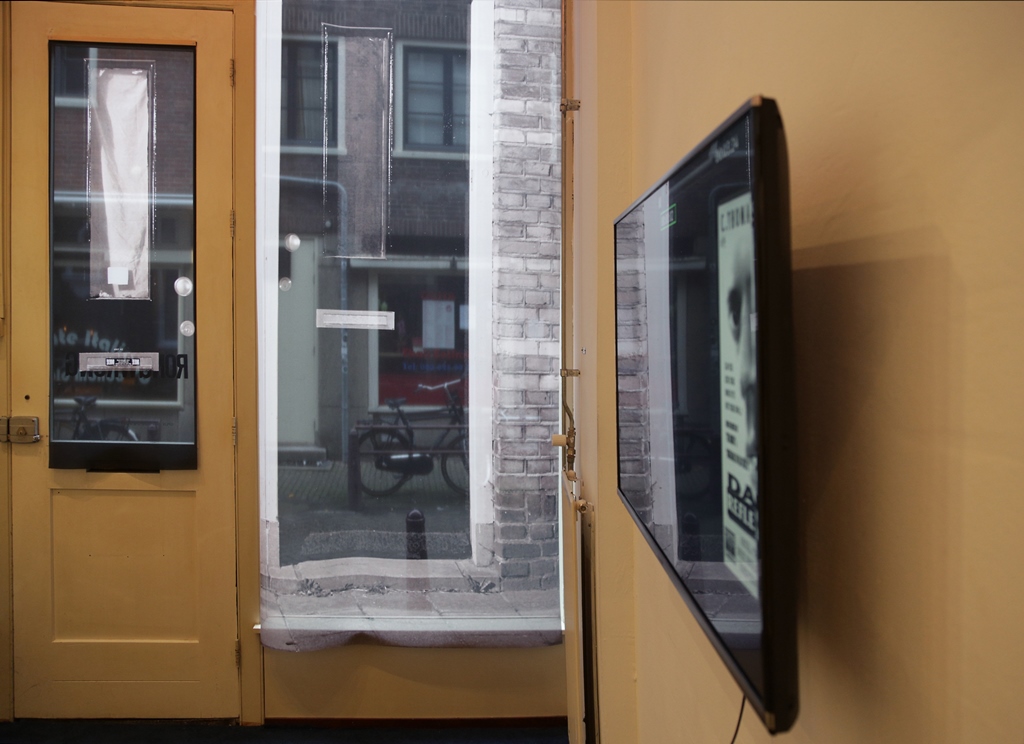
Sascha Pohle
Home Seqence
Rongwrong Amsterdam
17.1 t/m 22.2
Weronika Trojanska
is kunstenaar en schrijft over kunst